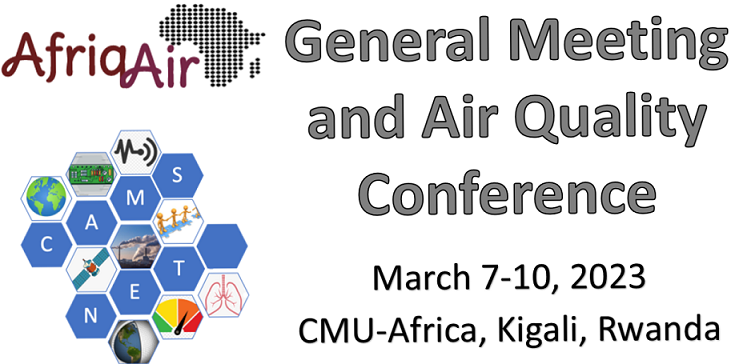Speaker
Description
In this study, long-term trends over 5 Ghana EPA traffic stations on (25 x 25) km resolution satellite OMI instrument and (50 x 50) km resolution MODIS Terra AOD from 2012 to 2021 were assessed using Mann-Kendall test to ascertain the impact of population growth coupled with increasing sources for the past decade in the GAMA. Further, characterization of Clarity Node-S PM2.5, AOD, NO2, and O3 levels in the GAMA was assessed while the Pearson coefficient was used to find correlations between the pollutants. Overall, there was an increasing trend in NO2 (p < 0.05), no trend in O3 (p > 0.05) and a decreasing trend in AOD (p < 0.01). Pearson coefficients between PM2.5 data and MODIS Terra AOD were (R2 = 0.72, 0.72, 0.67, 0.58 and 0.57) respectively. Correlation coefficient between column NO2 and O3 was (R2 = -0.83 ± 0.030, p < 0.01), AOD and O3 (R2 = -0.43 ± 0.003, p < 0.01), NO2 and AOD (R2 = 0.21 ± 0.010, p > 0.01). PM2.5, AOD and NO2 levels were high generally during the dry season while high concentrations of O3 were observed in the wet season across the stations. Again, an increasing and decreasing trends in NO2 and AOD levels show that sources of poor air quality may be shifting from the usual biomass burning to traffic emissions. High population growth with increasing traffic in growing sub-Saharan African cities requires urgent policy measures and regulations as ground air quality monitoring sensors are limited.

